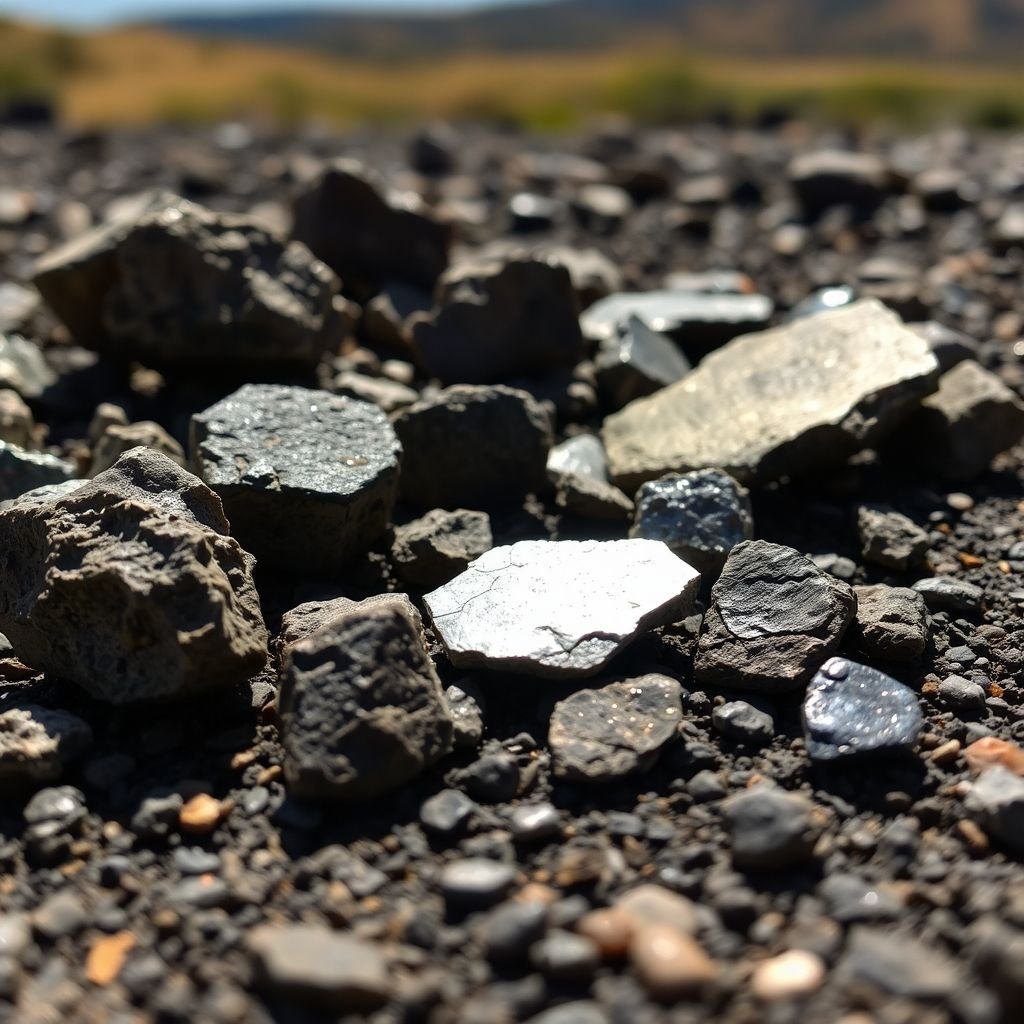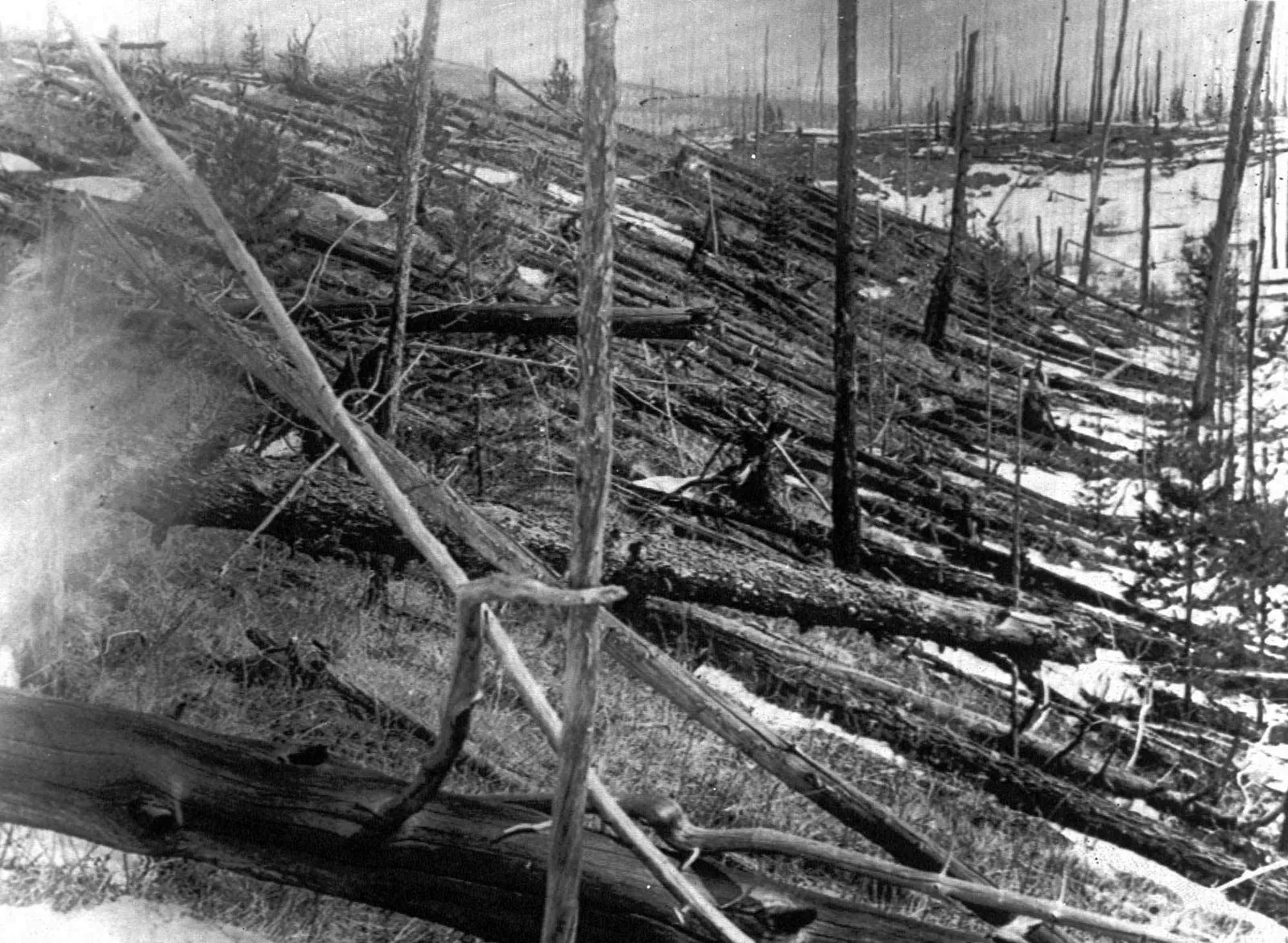Have you ever looked up at the night sky and wondered about the mysteries of the universe? If you’re eager to hunt for meteorites, you’re in for an exciting adventure. These space rocks hold secrets from the cosmos, and with the right knowledge and tools, you can find them. In this guide, we’ll explore where to look for meteorites and how to distinguish genuine space rocks from ordinary Earth stones. Get ready to embark on your own treasure hunt!
Key Takeaways
- Meteorites are remnants of space debris that survive their journey to Earth.
- The best places to search for meteorites are barren landscapes like deserts or areas with few terrestrial rocks.
- A good metal detector can help, but many successful hunters find meteorites by visually scanning the ground.
- Understanding ownership laws is crucial before you start hunting, especially on public or private land.
- Identifying meteorites involves recognising unique features like a fusion crust and checking for metallic content.
Understanding Meteorites and Their Origins

What Are Meteorites?
Meteorites are space rocks that survive the fiery journey through Earth’s atmosphere and land on the surface. They’re essentially remnants from the early solar system, offering a tangible link to the cosmos. It’s easy to confuse them with meteors, but a meteorite definition is the actual rock that lands, whereas a meteor is the streak of light you see as it burns up. These objects can provide scientists with invaluable information about the formation of planets and the composition of asteroids.
Types of Meteorites
Meteorites are broadly classified into three main types:
- Stony Meteorites: These are the most common type, making up around 94% of all recovered meteorites. They’re primarily composed of silicate minerals.
- Iron Meteorites: As the name suggests, these are mainly made of iron and nickel. They’re much heavier and denser than stony meteorites.
- Stony-Iron Meteorites: These are a mix of both stony and iron materials, making them quite rare and visually striking. They are divided into pallasites (with olivine crystals) and mesosiderites (brecciated mixtures).
Each type offers unique insights into the parent bodies from which they originated. The value of a meteorite depends on many factors, including rarity and condition.
The Journey from Space to Earth
The journey of a meteorite is quite dramatic. Most originate from the asteroid belt between Mars and Jupiter, though some can come from the Moon or even Mars. They travel for millions or even billions of years before their path intersects with Earth’s. As they enter the atmosphere, they experience intense friction, pressure, and chemical interactions, causing them to heat up and burn, creating the fusion crust that is a key identifying feature.
The intense heat experienced during atmospheric entry melts the surface of the meteorite, creating a thin, glassy crust. This fusion crust is often black or dark brown and can display flow lines or regmaglypts (thumbprint-like depressions). The journey is a gauntlet, and only the toughest rocks survive to become meteorites.
Choosing the Right Location for Your Hunt
So, you’re keen on finding a meteorite? Excellent! Location is absolutely key. You can’t just wander into any old field and expect to stumble upon a space rock. It takes a bit of planning and knowledge to increase your chances. Let’s explore some prime spots and factors to consider.
Ideal Hunting Grounds
The best places to hunt for meteorites are areas where they’re easy to spot. Think about it: a dark, unusual rock is going to stand out much more in a barren landscape than in a dense forest. Deserts are fantastic, especially dry lake beds that have been exposed for thousands of years. The Mojave Desert in Southern California is a well-known hotspot, with places like Rosamond, Muroc and Lucerne dry lakes yielding many finds. Icy regions like Antarctica are also good, as the ice provides a contrasting backdrop and helps preserve the meteorites. Plus, the dry conditions in these areas minimise alteration of the specimens. Consider meteorite identification as a crucial step in your hunt.
Strewn Fields and Impact Sites
Another great option is to look in strewn fields. These are areas where a single meteoroid broke up in the atmosphere, scattering fragments over a specific zone. There are known strewn fields near Glorieta Mountain in New Mexico, and Holbrook and Franconia in Arizona. These locations have produced thousands of stony meteorites. Impact sites, while rarer, can also be productive, but they often require more specialised knowledge and equipment to identify.
Local Fireball Reports
Keep an eye on reports of recent fireballs. If you see a bright meteor streaking across the sky, there’s a chance that fragments made it to the ground. Bill Cooke, head of NASA’s Meteoroid Environment Office, suggests identifying the “dark flight” of the meteor – that’s the part of its trajectory after it slows down and stops burning. Calculations can then be performed to estimate where the pieces might have landed. These calculations are often posted online. Marc Fries developed a technique using Doppler weather radar to detect the “rain” of meteoritic particles, which can help pinpoint fall zones quickly.
Remember, meteorite hunting requires patience and persistence. Don’t be discouraged if you don’t find anything on your first few outings. The more you learn about meteorites and the environments where they’re found, the better your chances of success will be.
Essential Equipment for Meteorite Hunting

Metal Detectors and Their Use
When you’re out hunting for meteorites, a good metal detector is your best mate. Most meteorites contain iron-nickel, so they’ll trigger a detector. But it’s not just about waving it around randomly. You need to understand the settings and how they respond to different types of ground. Some detectors are better at ignoring mineralised soil, which can give false positives. It’s worth investing in a decent one and learning how to use it properly. Geoff Notkin used specific metal detectors on Meteorite Men, and those are a solid starting point for research.
Visual Identification Tools
While metal detectors are great, sometimes you need to rely on your eyes. A good magnifying glass or hand lens is essential for examining rocks closely. Look for features like fusion crusts (the melted outer layer) and regmaglypts (thumbprint-like depressions). A geological hammer and chisel can help you break off a small piece to examine the interior. Don’t go smashing everything you see, though! A camera is also vital for documenting potential finds before you move them.
Field Gear for Comfort and Safety
Meteorite hunting can be tough work, often in remote areas. Here’s a list of things you should bring:
- Plenty of water – staying hydrated is key.
- Sun protection – hat, sunglasses, and sunscreen are a must.
- Sturdy boots – you’ll be doing a lot of walking over rough terrain.
- First-aid kit – for minor cuts and scrapes.
- GPS or compass – don’t get lost!
It’s also a good idea to let someone know where you’re going and when you expect to be back. Mobile phone signal can be patchy in remote areas, so don’t rely on it. If you’re hunting in a desert environment, snake guards are a good idea. And never go alone; two vehicles are recommended in case one breaks down.
Techniques for Spotting Meteorites
Searching by Eye vs. Using Technology
Okay, so you’re out in the field, ready to find some space rocks. The big question is: do you rely on your eyes, or do you bring in the tech? Some seasoned hunters swear by the ‘Mark I Eyeball’ method. This involves carefully scanning the ground, looking for anything that seems out of place. It’s a bit like looking for a needle in a haystack, but when you find something, it’s incredibly rewarding. The advantage is you can cover a lot of ground and spot meteorites that metal detectors might miss, like lunar or Martian meteorites. However, it requires patience and a keen eye for detail.
On the other hand, technology like metal detectors can be a game-changer. Most meteorites contain iron-nickel, which means they’ll set off a detector. This can be especially useful in areas with lots of ground cover or where the meteorites are buried. But remember, metal detectors aren’t foolproof. They can also pick up terrestrial junk, so you’ll still need to do your homework.
Identifying Unique Features
So, you’ve spotted something that looks promising. What next? Well, meteorites have a few key characteristics that can help you identify them. Here’s a quick rundown:
- Fusion Crust: This is a dark, glassy coating that forms when the meteorite burns through the atmosphere. It’s usually black or brown and can be quite shiny.
- Regmaglypts: These are thumbprint-like depressions on the surface of the meteorite, caused by the melting and ablation during atmospheric entry.
- Weight: Meteorites are usually denser than ordinary Earth rocks, so they’ll feel heavier than they look.
- Metallic Flecks: Many meteorites contain metallic iron-nickel, which can be visible as shiny flecks on a broken surface.
It’s important to remember that not all meteorites have all these features, and some Earth rocks can mimic them. But if your find has several of these characteristics, it’s worth investigating further. If you are tracking near-Earth objects, you might be able to predict the composition of the meteorite.
Best Practises for Scanning Terrain
Alright, let’s talk about how to actually scan the terrain effectively. Here are a few tips I’ve picked up over time:
- Grid Search: Divide the area into a grid and systematically search each section. This ensures you don’t miss anything.
- Vary Your Angle: Look at the ground from different angles. This can help you spot subtle differences in colour and texture.
- Take Breaks: Meteorite hunting can be tiring, so take regular breaks to rest your eyes and stretch your legs.
- Mark Your Finds: If you find something promising, mark it with a flag or GPS coordinate so you can come back to it later.
Remember, meteorite hunting is a marathon, not a sprint. It takes time, patience, and a bit of luck. But with the right techniques and a keen eye, you’ll increase your chances of finding a genuine space rock. And when you do, it’s an incredible feeling. It’s like holding a piece of the solar system in your hand.
Legal Considerations When Hunting Meteorites

Understanding Ownership Laws
So, you’ve got the meteorite hunting bug? Fantastic! But before you head out with your metal detector and dreams of cosmic riches, it’s really important to understand who actually owns those space rocks once they’ve landed. The rules can be a bit murky, and they definitely vary depending on where you are. Generally, meteorites found on private land belong to the landowner – simple as that. Always get permission before setting foot on someone’s property. On public land, things get more complicated. Some agencies might consider meteorites as artefacts, meaning they belong to the government. It’s best to check local regulations before you start your search.
Getting Permission to Hunt
This is non-negotiable: always, always get permission before hunting on private land. It’s not just about being polite; it’s about respecting the law and avoiding potential legal trouble. Approach the landowner, explain what you’re doing, and be clear about your intentions. A written agreement is always a good idea, just to avoid any misunderstandings later on. Remember, building a good relationship with landowners can open up opportunities for future hunts. It’s also worth checking if the landowner is aware of any local fireball reports in the area, as this could increase your chances of finding something.
Navigating Public vs. Private Land
Knowing the difference between public and private land is absolutely vital. Public land might seem like a free-for-all, but it’s often subject to specific rules and regulations. National parks, for example, usually prohibit the collection of any materials, including meteorites. Private land, on the other hand, is governed by the landowner’s wishes. Here’s a quick breakdown:
- Public Land: Check with the relevant agency (e.g., the Bureau of Land Management) for specific rules.
- Private Land: Always obtain written permission from the landowner.
- National Parks/Reserves: Generally, meteorite hunting is prohibited.
Ignoring these distinctions can lead to serious consequences, including fines or even legal action. Always do your homework and ensure you’re operating within the bounds of the law. It’s better to be safe than sorry when it comes to meteorite hunting.
Identifying Genuine Meteorites

So, you think you’ve found a meteorite? Exciting! But before you start planning your lunar vacation, it’s vital to make sure that rock is actually from space. There are a lot of ‘meteor-wrongs’ out there – Earth rocks that look a bit like the real deal but are, well, just rocks. Let’s look at how to tell the difference.
Key Characteristics of Meteorites
Okay, so what should you be looking for? Meteorites often have a few key features that set them apart from terrestrial rocks. It’s rare for a single rock to have all of these, but the more you spot, the better your chances.
- Fusion crust: This is a dark, often shiny, coating formed as the meteorite burns through the atmosphere. It can look a bit like eggshell.
- Regmaglypts: These are thumbprint-like depressions on the surface, caused by the melting and ablation during atmospheric entry.
- Density: Meteorites are usually denser than most Earth rocks. They feel heavier than they should for their size.
- Metallic iron: Most meteorites contain iron-nickel metal, so they’ll often be attracted to a magnet. You can use a simple magnet test to check.
Common Misidentifications
It’s easy to get excited and jump to conclusions, but many Earth rocks can fool you. Here are some common culprits:
- Iron ore: Especially magnetite and hematite, can be magnetic and heavy, but they lack a fusion crust.
- Slag: A byproduct of industrial processes, slag can look a lot like a meteorite, but it often has a bubbly or glassy texture.
- Limonite: This iron oxide can have a dark, rusty appearance, but it’s usually much lighter than a meteorite.
Remember, just because a rock is dark, heavy, and magnetic doesn’t automatically make it a meteorite. It’s important to consider all the characteristics and compare your find to known examples.
Testing for Authenticity
So, you’ve checked the characteristics and ruled out the obvious imposters. What next? Here are a few simple tests you can do:
- Streak test: Rub the rock on a ceramic tile. Meteorites usually don’t leave a streak, while many Earth rocks will.
- Magnet test: Double-check the magnetic attraction. A strong pull is a good sign, but not a guarantee.
- Visual inspection: Use a magnifying glass to look for chondrules (small, spherical grains) inside the rock. These are common in many types of meteorites.
If you’re still unsure, the best thing to do is get it checked by an expert. There are labs that offer meteorite analysis, and they can give you a definitive answer. It might cost a bit, but it’s worth it for peace of mind – and bragging rights if you’ve actually found a piece of space!
Sharing Your Discoveries with the Scientific Community
So, you’ve found a rock. You’ve done your research, maybe even a few tests, and you’re pretty sure it’s a meteorite. What next? Don’t just stick it on the mantelpiece! Sharing your find with the scientific community is a really important step. It helps researchers learn more about the solar system and the origins of these space rocks. Plus, it’s just plain cool to contribute to science.
Reporting Your Find
First things first, document everything. Take detailed photos of the meteorite in situ (where you found it) and after you’ve collected it. Note the exact location using GPS coordinates. Write down everything you remember about the circumstances of the find – the terrain, the weather, anything that might be relevant. This information is invaluable to researchers.
Then, contact a reputable meteorite expert or institution. Many universities and museums have researchers who specialise in meteorites. A quick online search should point you in the right direction. Be prepared to provide them with all your documentation and, potentially, a sample of the meteorite for analysis.
The Importance of Documentation
Good documentation is absolutely key. Without it, your find is just another rock. Detailed records allow scientists to understand the context of the meteorite, its potential origin, and its relationship to other meteorites. Think of yourself as a detective, gathering clues for the scientific community. The more information you can provide, the more valuable your discovery will be.
Here’s a quick checklist of what to document:
- Date and time of discovery
- Exact GPS coordinates
- Detailed photographs (before and after collection)
- Description of the surrounding environment
- Any initial observations about the meteorite’s appearance
Contributing to Meteorite Research
By sharing your find, you’re directly contributing to meteorite research. Each new meteorite provides a fresh data point, helping scientists to refine their understanding of the solar system’s formation and evolution. Your meteorite could contain unique minerals or isotopes that shed light on the early solar system or the composition of asteroids.
It’s worth remembering that researchers often request a portion of the meteorite (typically 20 grammes or 20% of the total mass, whichever is less) for their institutional collections in exchange for analysis and classification. This might seem like a lot, but it ensures that the meteorite is properly studied and preserved for future generations of scientists.
Don’t be shy about contacting experts. Even if your find turns out not to be a meteorite, you’ll have learned something in the process. And if it is the real deal, you’ll have played a part in expanding our knowledge of the universe.
Final Thoughts on Meteorite Hunting
So, there you have it! Hunting for meteorites can be a thrilling adventure, but it does take some effort and a bit of know-how. Remember to get permission before you start digging around, and choose your hunting grounds wisely—barren areas are your best bet. Keep your eyes peeled for those dark, unusual rocks, and don’t forget to use a metal detector if you can. If you think you’ve found something special, take a moment to share it with scientists; every find adds to our understanding of the universe. Happy hunting, and who knows? You might just uncover a piece of the cosmos!
Frequently Asked Questions
Where should I look for meteorites?
Meteorites can be found in many places, but the best spots are usually areas with few rocks, like deserts or icy regions. Places like the Mojave Desert or Antarctica are great for spotting them.
What tools do I need for hunting meteorites?
A metal detector is helpful since many meteorites contain metal and can be detected. However, you can also find them just by looking carefully at the ground.
How can I tell if a rock is a meteorite?
Genuine meteorites are often darker than regular rocks and have a smooth, shiny surface. They might also feel heavier and can be magnetic.
Do I need permission to hunt for meteorites?
Yes, it’s important to get permission before searching on private land. Meteorites found in national parks belong to the government and cannot be kept.
What are strewn fields?
Strewn fields are areas where many meteorites from a single meteorite fall are scattered. These places can be very rewarding for hunters.
What should I do if I find a meteorite?
If you think you’ve found a meteorite, take photos and note the location. It’s a good idea to report your find to scientists, as it can help with research.









1 Comment
fgdfdfb